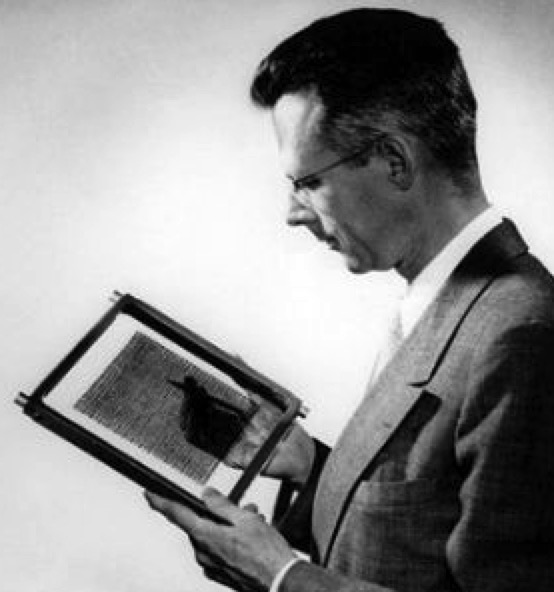History (1953): Whirlwind Computer Debuts Core Memory
Preferred technology for computer main memory in early 1950s
This is a Press Release edited by StorageNewsletter.com on February 27, 2018 at 2:24 pmThis article comes from the Computer History Museum.
1953: Whirlwind computer debuts core memory
Magnetic cores provide a fast, reliable solution for computer main memory
Jay Forrester holding core memory plane
(Courtesy of MIT Museum)

A magnetic core memory stores information on arrays of small rings of magnetized ferrite material called cores. Each core stores one bit of data that may be switched from a one to a zero by changing the polarity of the induced magnetic field. Electrical pulses in wires threaded through the array both detect (read) and change the direction (write) of magnetization of a specific core. High speed, improved reliability, random access to any bit of information, and non-volatile storage encouraged the rapid acceptance of core as the preferred technology for computer main memory in the early 1950s.
Amateur inventor Frederick W. Viehe filed a core memory patent in 1947 followed by Harvard physicist An Wang in 1949. RCA’s Jan Rajchman and MIT’s Jay Forrester filed in 1950 and 1951 respectively. Other important contributors include E. Albers-Schönberg, J.P. Eckert, and M.K. Haynes.
Led by Forrester, the Whirlwind computer project at Massachusetts Institute of Technology for a U.S. Navy real-time flight simulator replaced a troubled electrostatic CRT memory with a 32 by 32 array (called a plane) of 1,024 cores and demonstrated its advantages for the first time in August 1953.
Announced in 1954, the first IBM commercial core unit, Model 737, offered 4,096 36-bit words for a rental fee of $6,100 a month.
Ten years later the Control Data Corporation CDC6600 supercomputer offered up to 2 million 60-bit words of extended core storage. A labor intensive task, the assembly of core memory planes became one of the first U.S. electronic manufacturing operations to move to Asian plants.
Cost declined from $1.00 to one cent per bit before being replaced by semiconductor memory in the 1970s.













 Subscribe to our free daily newsletter
Subscribe to our free daily newsletter

